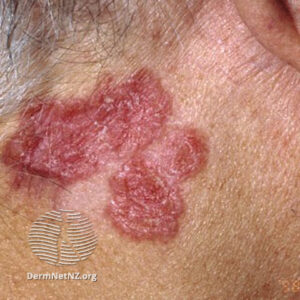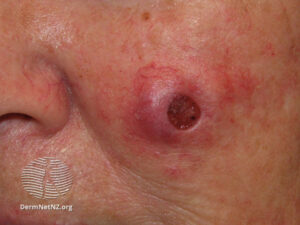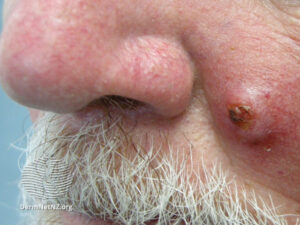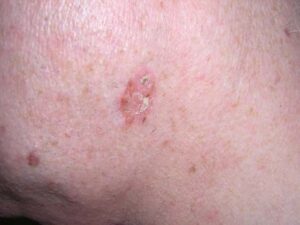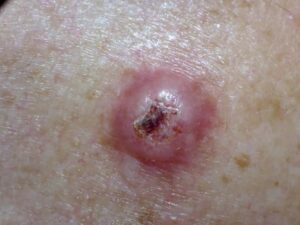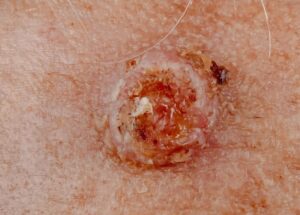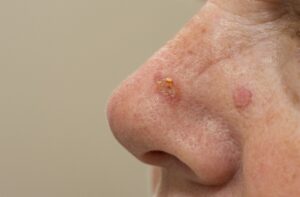
What does Squamous Cell Skin Cancer Look Like?
Most squamous cell skin cancers (SCSCs) appear on the skin in places exposed to ultraviolet (UV) radiation. They have some common visual characteristics, although your medical provider should assess any suspicious skin growths or abnormalities. SCSC may develop in damaged and inflamed areas of the skin, such as on or around scars, chronic ulcers, and previous sites of burns.
Many SCSCs appear as wounds that never heal. They usually grow relatively slowly and may look red, scaly, crater-like, ulcerated, or bumpy. Some are crusty or itchy and may bleed. Because of sun exposure, SCSCs frequently develop on the ears, neck, and head. The lips can also develop SCSC.
These images reflect the variation in the appearance of SCSC. Images are meant to help you recognize areas on your skin that warrant consultation with a dermatologist. This image bank is not exhaustive, and your healthcare provider can help determine whether the area of suspicion is SCSC.

